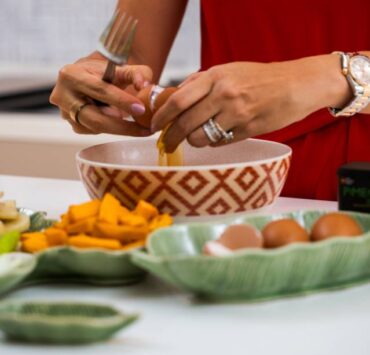Ricco Ocampo’s world shows a life built on taste
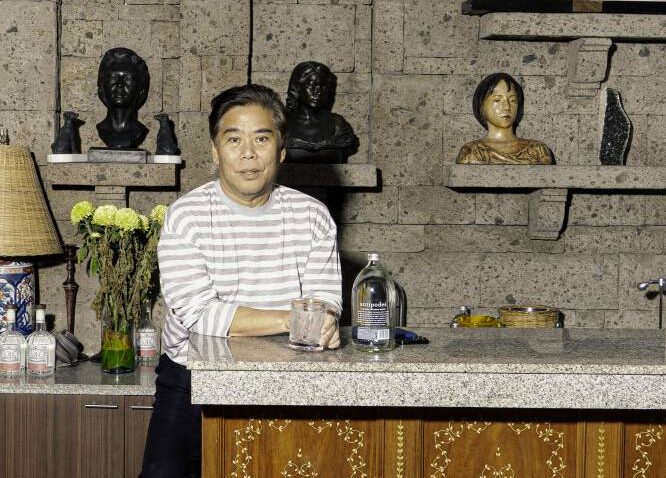
When you say Ricco Ocampo, no matter what age, you’ve likely heard the name. It rings a bell, with his range of projects spanning fashion, furniture, restaurants, and design both locally and abroad, all anchored in an unshakable sense of taste.
Known for shaping the experience of beauty across multiple domains, Ocampo’s ventures have included fashion and retail brands like Sari-Sari, the House of O, Anonymous, i2i New York, and Celestina; established F&B concepts Kitchen, Mangan, Ebun, and Kai; and influential lifestyle projects like the collaborative dining space Mix Manila and the exclusive cultural hub, Manila House.
Throughout, he has worked closely with his wife, Tina Maristela-Ocampo, one of the country’s top models and a fashion entrepreneur herself.
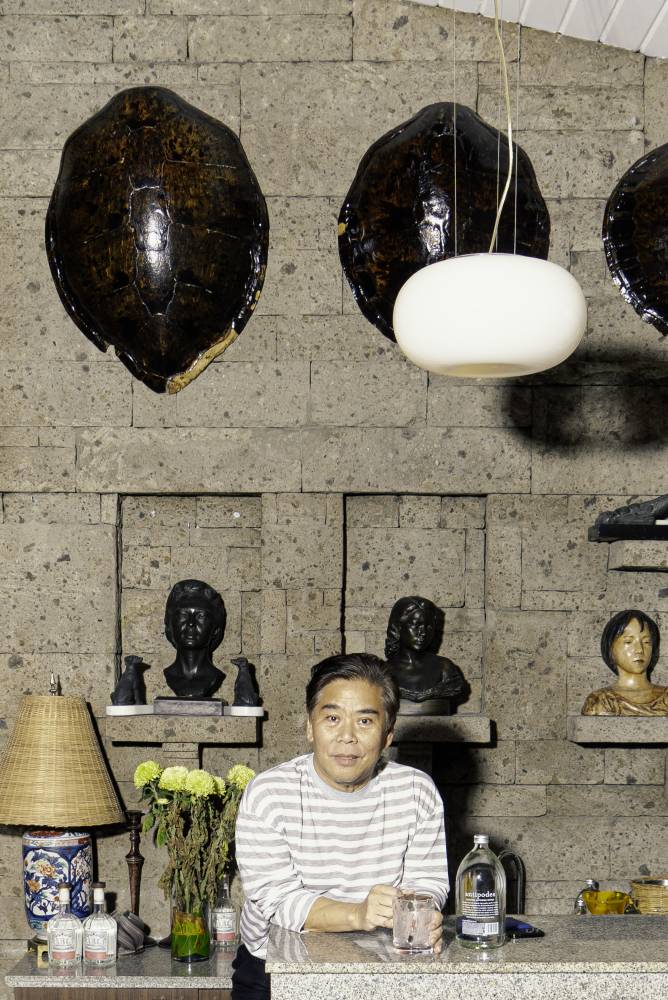
Growing up in Pampanga shaped Ocampo’s sensibility early on. “[It] allowed me to daydream and teach myself what it takes to be a purveyor of taste,” he says.
This curiosity led him from fashion to furniture, from interiors to restaurants, in a fluid journey with both instinct and discipline. “Love of country is first and foremost,” he adds. “Sharing your knowledge and learning from the artisans is what keeps me going. I shall not exchange this passion for anything else.”
Eclectic by nature
Today, Ocampo’s home stands as a reflection of that journey. There’s something exotic yet lived-in about the space, with adobe walls that echo a bygone, earthier time, flanked by heavy wooden furniture.
At the center of the living room, Persian carpets are stacked lazily on top of one another, with a unique turquoise-dyed crocodile skin draped over an ottoman. An array of both antique and mid-century chairs is scattered throughout the rooms. On the tables, silver trays shaped like leaves sit nearby prettily potted plants.
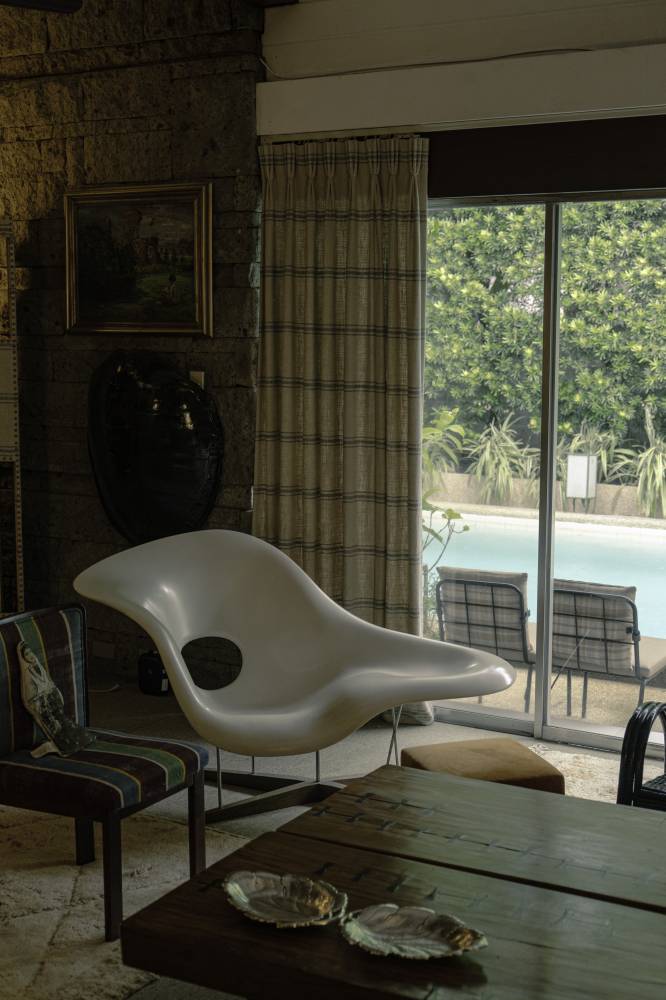
Hanging on one wall, three great turtle shells loom above busts of women in little niches, on pedestals within the curves of the adobe walls. This is in front of a small bar, made of wood, with inlaid mother-of-pearl. Further up is vintage wallpaper, showing tropical palm trees, which gives the feeling of transporting guests to a bygone time.
While there are many aspects of the traditional, Ocampo makes contemporary choices, too. In one corner, an Ian Fabro artwork towers over nine feet tall. Within the frame are layers of meticulously drawn figures and fragments collaged with tiny pins. The piece of Fabro is monumental, and takes several people to move.
Ocampo describes his style as filled with, “Eclectic, meaningful pieces, and constant change,” he says. “It’s all about one’s proportions of mixing to acquire authenticity in life.”
“It’s all about curiosity,” Ocampo says. “The quest for the love of good things in life. Years and years of learning one’s taste and improving constantly.”
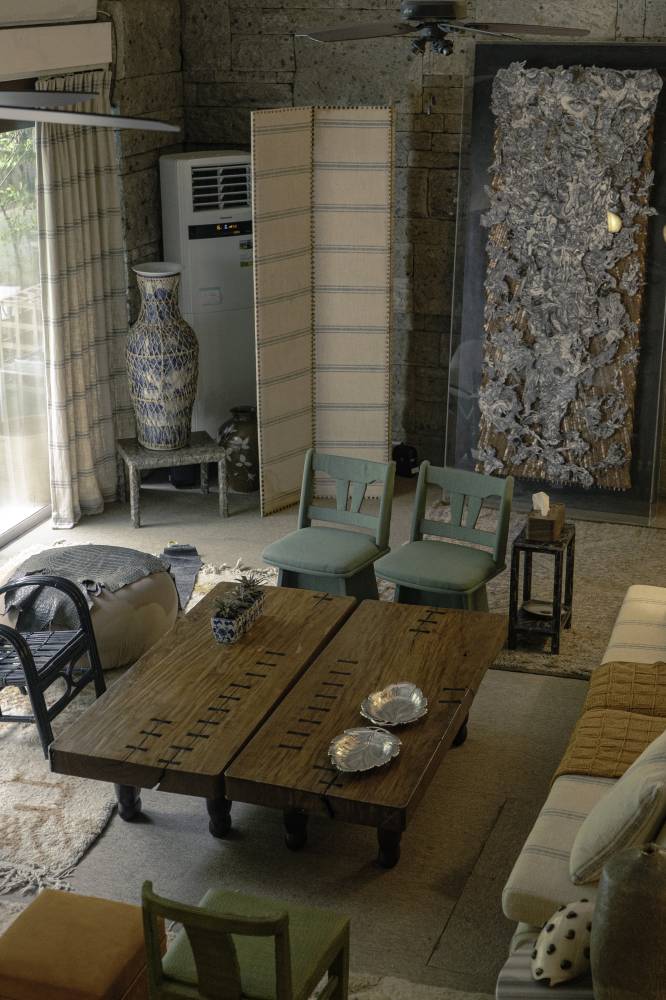
Natural rhythms
Lately, Ocampo has been hosting lunches and dinners at The House of O, setting up tablescapes that are beautiful yet always unpretentious. He explains how he often features traditional Kapampangan dishes, elevated by the freshest market finds or some Nomad Caviar.
“It gives me great joy feeding friends and entertaining,” he shares, highlighting “sincerity” as the key to hosting, and “of course, the quest for authenticity in all that I do.”
For music to complement these meals, he says, he’s recently been “into Tagalog classics and Bach.”
These experiences emphasize how the space seems to recall an older kind of Manila, a slower time when lunches stretched into late afternoons, and conversations felt unhurried and generous. At the same time, they seem to reflect Ocampo’s own rhythms and histories, structured by feeling more than plan.
“(I do) furniture design because I can never be in interior design nor architecture,” he says. “I plan for shows a year with my own narrative and my own terms.”
And while his home appears meticulously arranged, he laughs at the notion of perfection. “Eccentricity and messy. I can never fix my studio in order or I shall not be able to think well.”
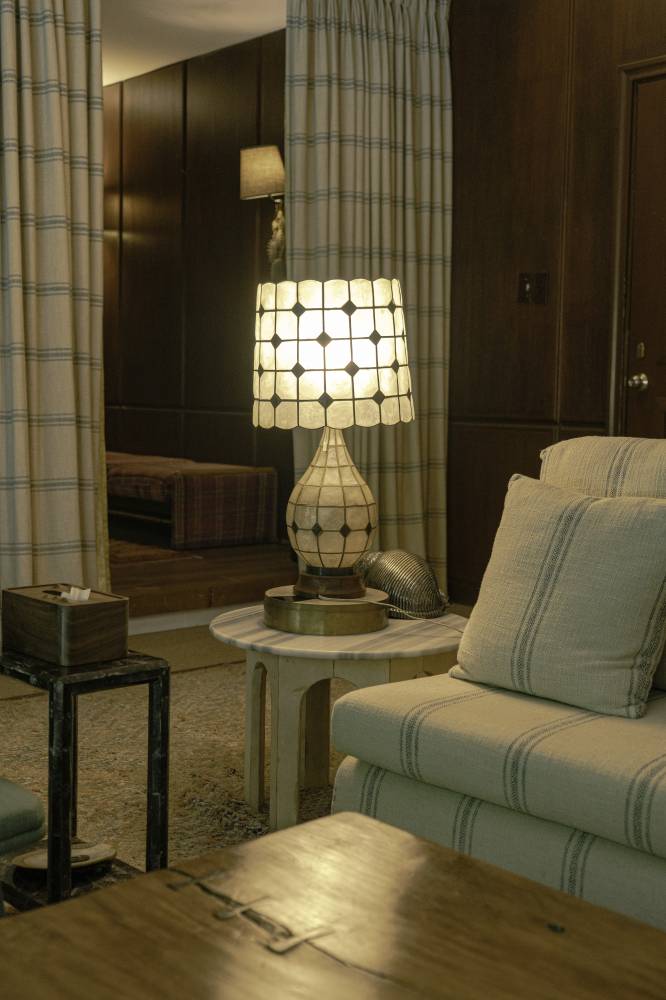
Nostalgia and craft
Even after decades of work, Ocampo remains curious, doing “ongoing research with the past designs I have done,” he says. “Never did I keep or record these. So reissue of my work is a work in progress—it’s a bit exciting, as I have forgotten half of what I have done in over 40 years.”
For example, he’s recently done a re-issue of a coveted piece at Barney’s New York, a chair made from Penshell sourced in Cebu with a sculptural leather tail made of genuine alligator skin from Singapore, now available exclusively through his home studio.
Every corner of Ocampo’s home, from the adobe textures, the mother-of-pearl inlays, and the vintage chairs, to new pieces of both artists and his own creations, creates a conversation between past and present, nostalgia without sentimentality, craft without pretension.
Ocampo’s home seems less a showplace but a reflection of a life lived with taste, honoring the Filipino soul, with authenticity in the mix. It’s as he states, “It’s all about curiosity, and the love of good things in life.”















